One & One Green Technologies stock soars 100% after IPO debut
Stocks rose sharply yesterday, following Trump’s announcement on Sunday to “pause” the 50% tariffs on the EU. However, the move went above and beyond that, and it likely had more to do with rates in Japan dropping overnight than anything else, as rates in the US also fell.
Japan’s Finance Ministry is set to meet with dealers on June 20, sparking speculation about potential cuts in ultra-long bond issuance. Of course, markets can fluctuate significantly between now and then, and it’ll be fascinating to see where JGB rates settle. Admittedly, I’m no expert on JGB issuance—or the political chess game behind it.
However, one can easily see on the chart that the 40-Year JGB rates reached overextended levels. It will be more interesting to see if they continue to decline tonight. I would think that if issuance shifts to the shorter end of the curve, the question is whether yields on 2-year and 5-year rates rise. It will be interesting to see how they respond as well.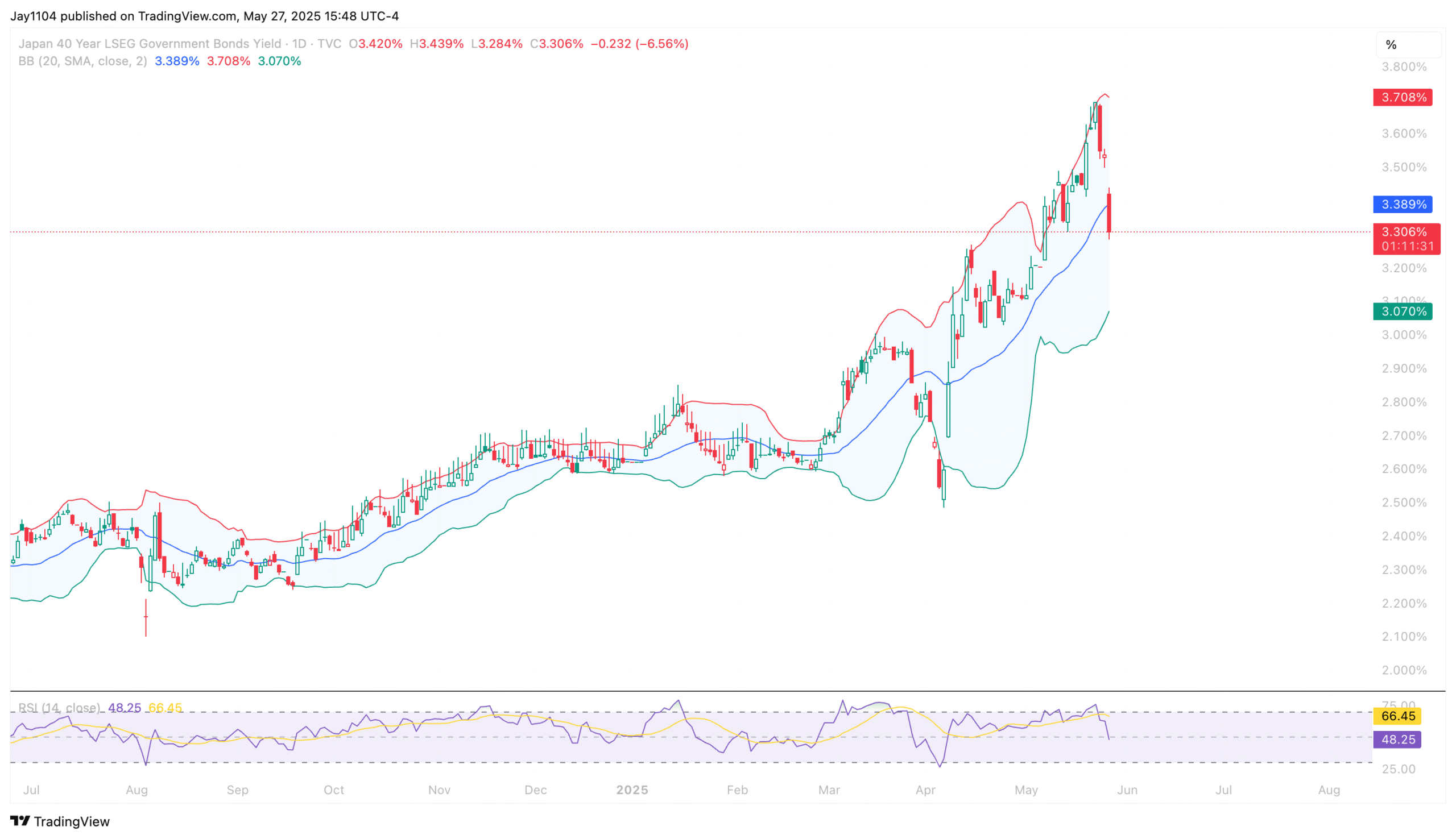
This sent the US 30-year rate lower yesterday, and clearly, the impacts in Japan will weigh in. Additionally, we are approaching month-end, and with US bond yields rising significantly, some bonds may need to be purchased. I’d imagine that at 4.8% there is some good support, given it’s the 61.8% retracement level, and a long-time support/resistance zone.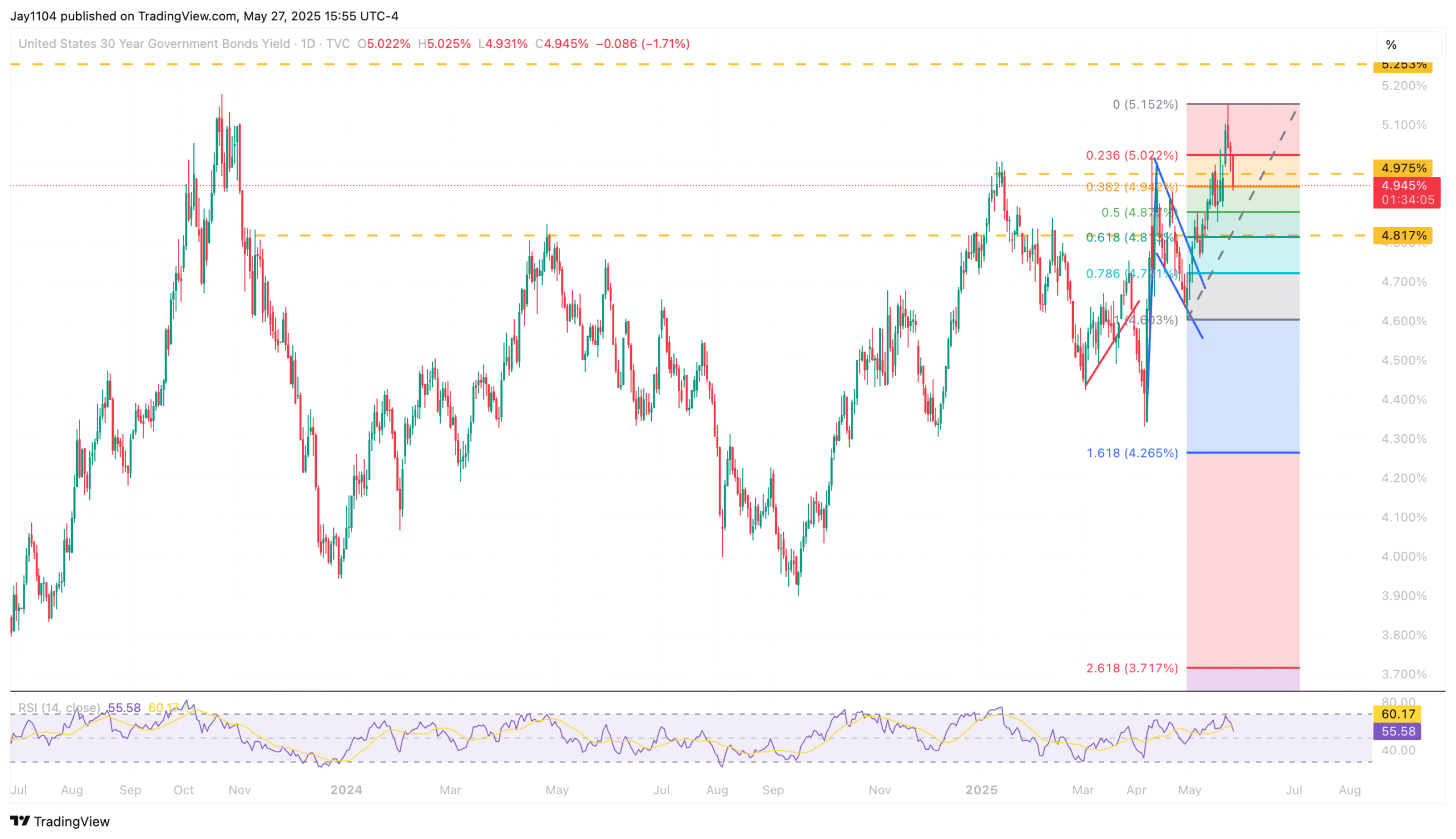
The S&P 500 gapped higher this morning, and didn’t look back. It is tough to view yesterday’s price action as anything other than a rebound attempt, or perhaps even some positioning ahead of a busy week that includes the FOMC minutes, Nvidia’s (NASDAQ:NVDA) results, GDP revisions, and PCE data.
To this point, we retraced 78.6% of the decline from May 19 to Friday morning’s low—pretty standard stuff at this point. Even if we move back to 5,960, it would not be surprising.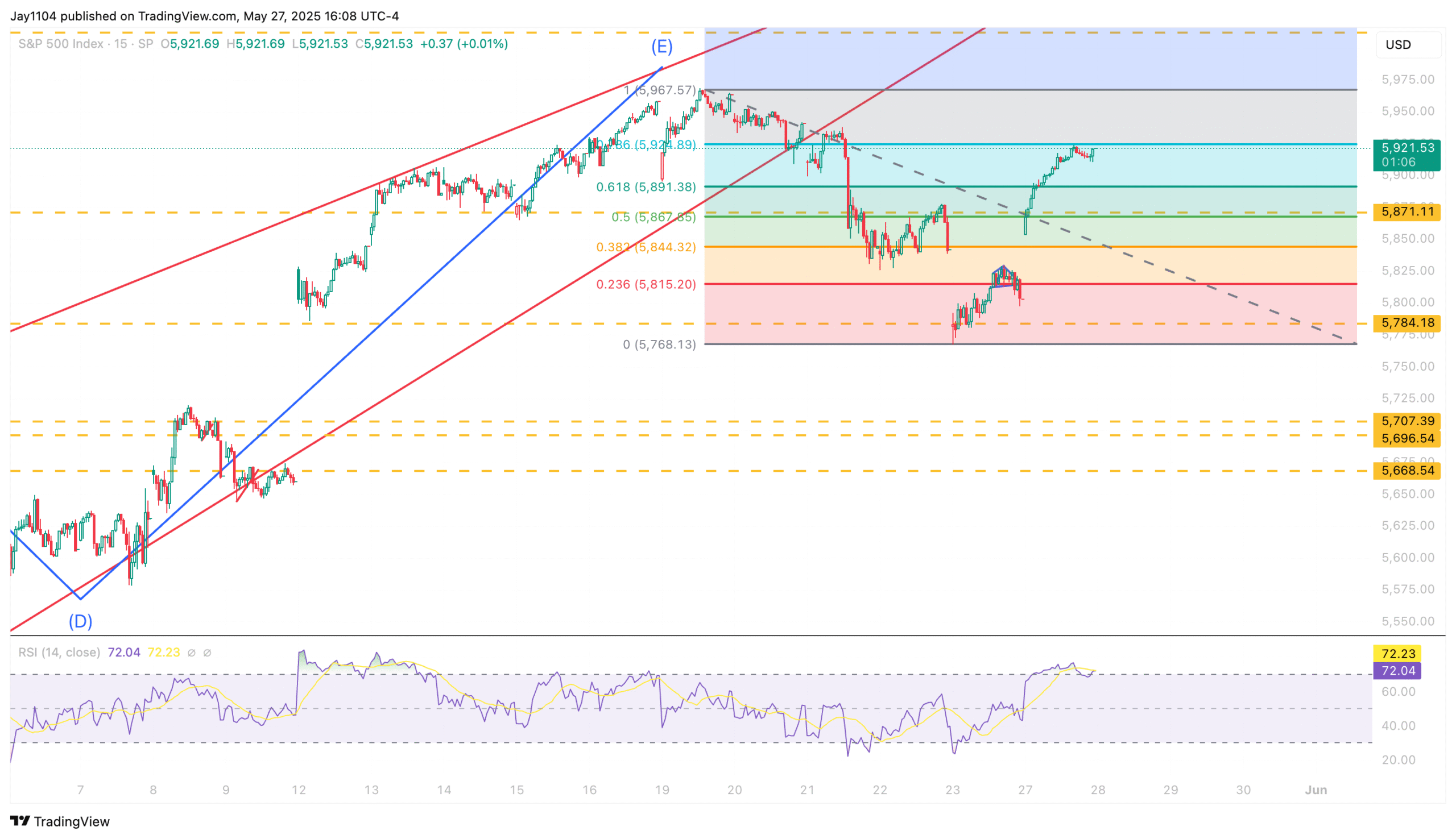
It certainly appears that a rising wedge pattern has formed in the index, and if that is the case, the index should rise significantly more than from 5,960 to 5,970.
Of course, Nvidia reports results today, and yesterday implied volatility rose to over 95%, and it will likely be well over 100% by the time the company reports results this afternoon. The interesting thing is that the Call IV for this week is higher than the PUT IV across strike prices. So clearly, there is a lot of demand for calls.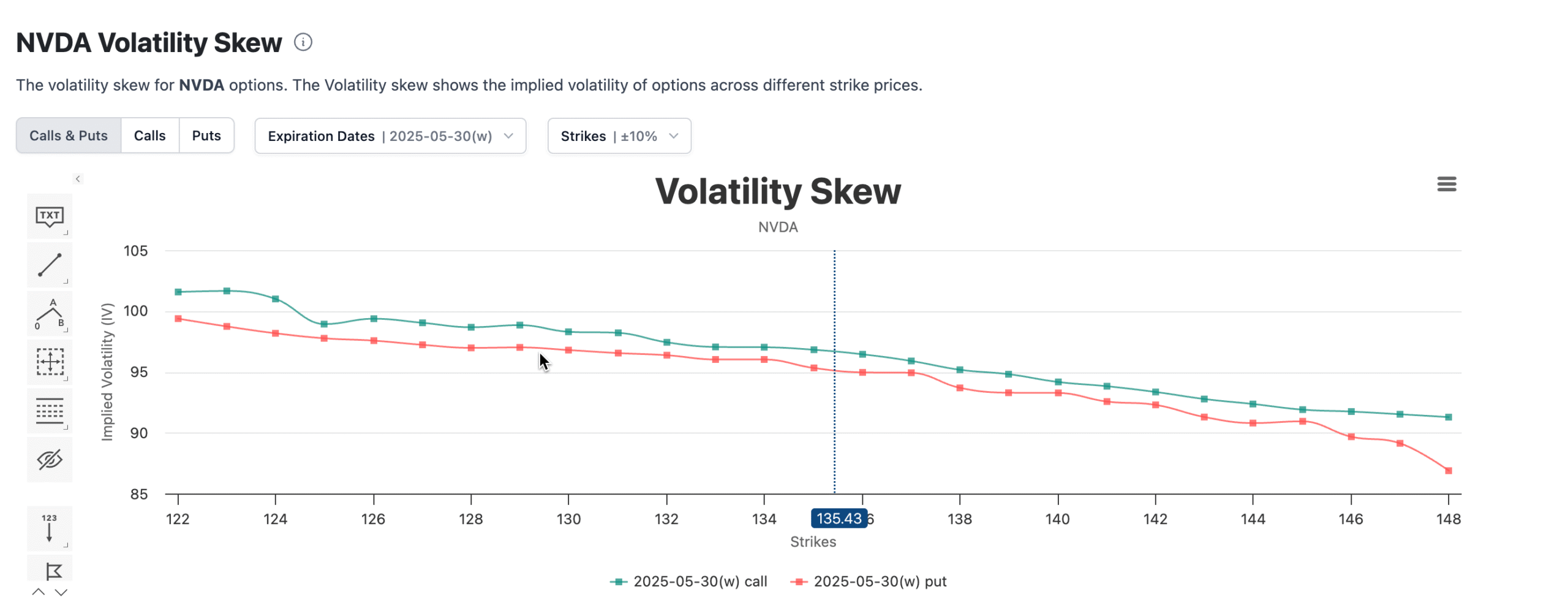
Again, the $135 calls are trading for $4.95 per contract; therefore, the stock needs to trade above $140 for the calls to turn a profit, which also happens to be a significant wall of gamma, with more at $145.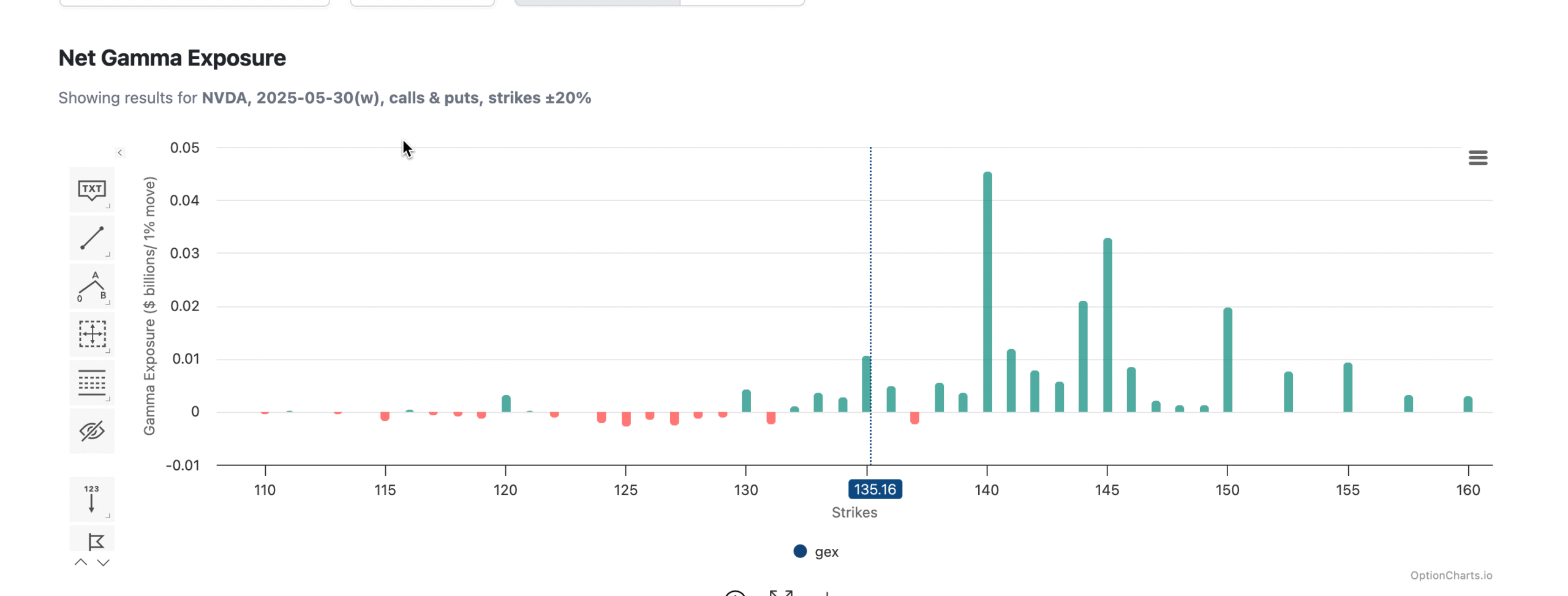
The problem, as mentioned over the weekend, is that once the company reports, those calls will plunge in value, so unless the company surprises, meaning it beats by more than the usual $2 to $3 billion and raises guidance by more than the typical $2-3 billion, the stock is going to have a tough time going higher.
